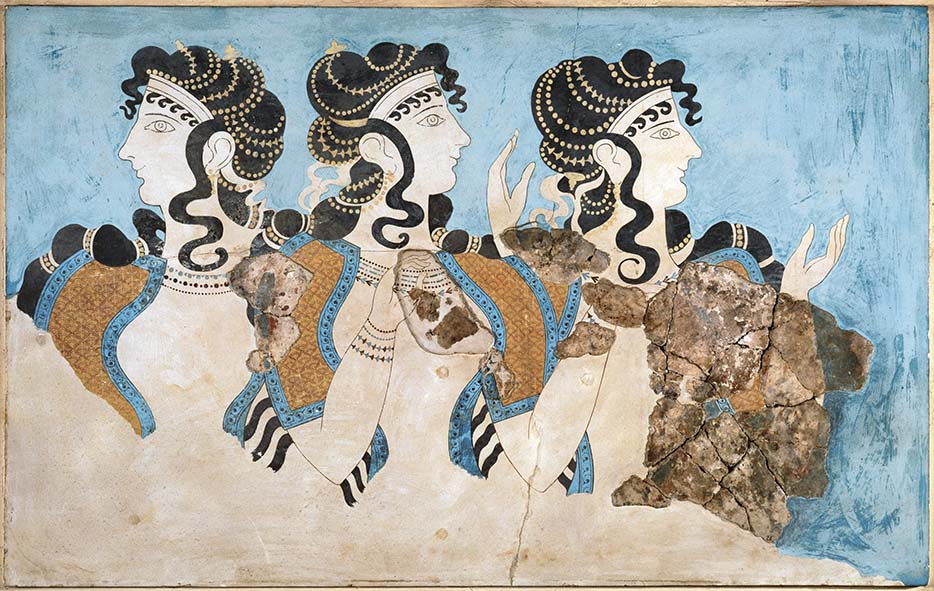
The Heraklion Archaeological Museum is a museum located in Heraklion on Crete. It is one of the greatest museums in Greece and the best in the world for Minoan art, as it contains the most notable and complete collection of artefacts of the Minoan civilization of Crete.
The museum began in 1883 as a simple collection of antiquities. A dedicated building was constructed from 1904 to 1912 at the instigation of two Cretan archaeologists, Iosif Hatzidakis and Stefanos Xanthoudidis. After three destructive earthquakes in 1926, 1930, and 1935, the museum nearly collapsed. The director of the Heraklion Museum was then Spyridon Marinatos, who made great efforts to find funds and persuade the locals and the central government alike that a new solid building was needed. In 1935, Marinatos succeeded in engaging Patroklos Karantinos to build a sturdy structure that has withstood both natural disasters and the bombing that accompanied the German invasion in 1941. Although the museum was damaged during World War II, the collection survived intact and again became accessible to the public in 1952. A new wing was added in 1964.
The Herakleion Archaeological Museum is one of the largest and most important museums in Greece, and among the most important museums in Europe. It houses representative artifacts from all the periods of Cretan prehistory and history, covering a chronological span of over 5,500 years from the Neolithic period to Roman times. The singularly important Minoan collection contains unique examples of Minoan art, many of them true masterpieces. The Heraklion Museum is rightly considered as the museum of Minoan culture par excellence worldwide.
The museum is located in the town centre. It was built between 1937 and 1940 by architect Patroklos Karantinos on a site previously occupied by the Roman Catholic monastery of Saint-Francis which was destroyed by earthquake in 1856. The museum’s antiseismic building is an important example of modernist architecture and was awarded a Bauhaus commendation. Karantinos applied the principles of modern architecture to the specific needs of a museum by providing good lighting from the skylights above and along the top of the walls, and facilitating the easy flow of large groups of people. He also anticipated future extensions to the museum. The colours and construction materials, such as the veined polychrome marbles, recall certain Minoan wall-paintings which imitate marble revetment. The two-storeyed building has large exhibition spaces, laboratories, a drawing room, a library, offices and a special department, the so-called Scientific Collection, where numerous finds are stored and studied. The museum shop, run by the Archaeological Receipts Fund, sells museum copies, books, postcards and slides. There is also a café.
Most of the museum was closed for renovation from 2006 and reopened in May 2013.
The Heraklion Archaeological Museum is a Special Regional Service of the Ministry of Culture and its purpose is to acquire, safeguard, conserve, record, study, publish, display and promote Cretan artefacts from the Prehistoric to the Late Roman periods. The museum organizes temporary exhibitions in Greece and abroad, collaborates with scientific and scholarly institutions, and houses a variety of cultural events.
Source: Wikipedia
